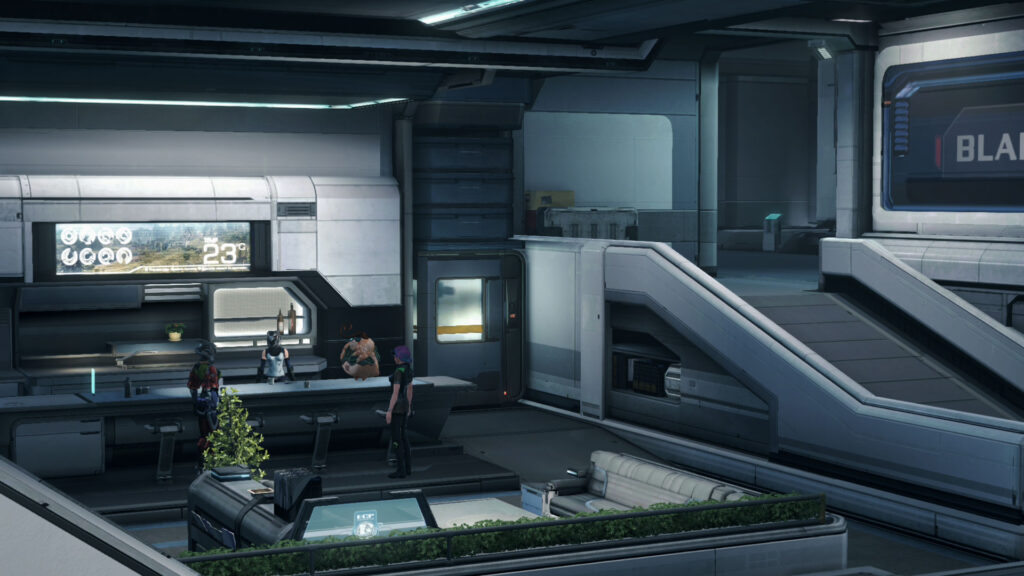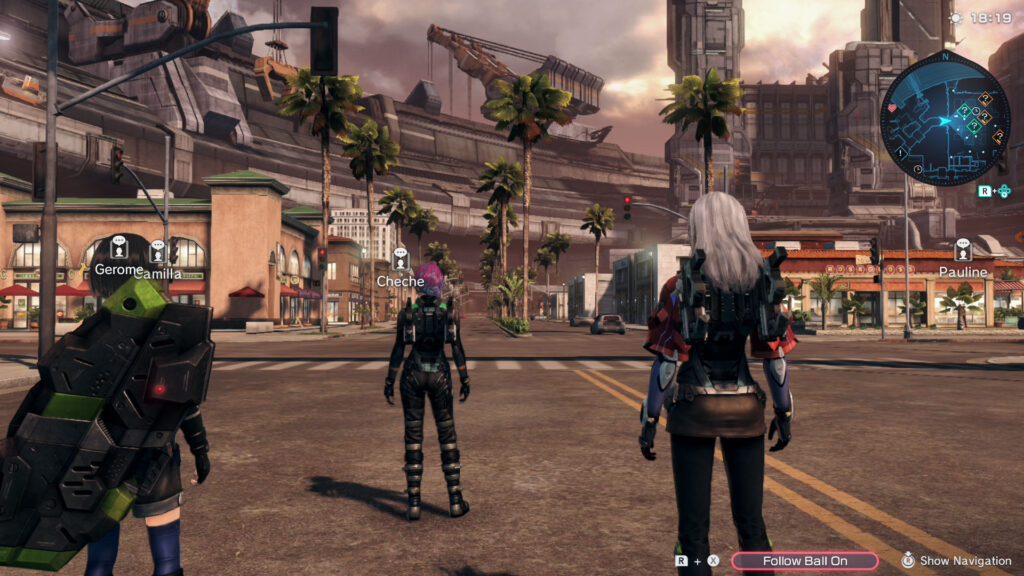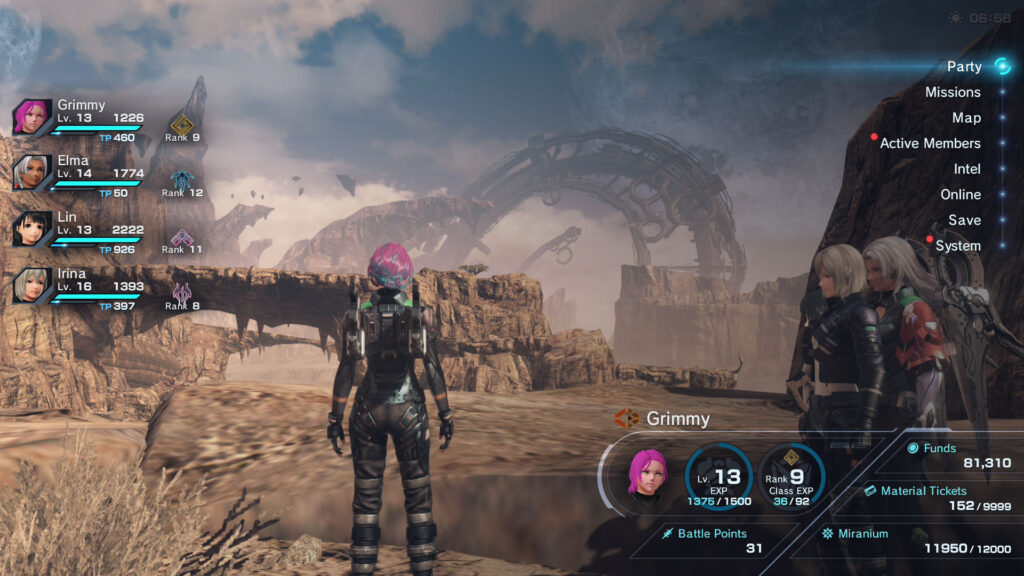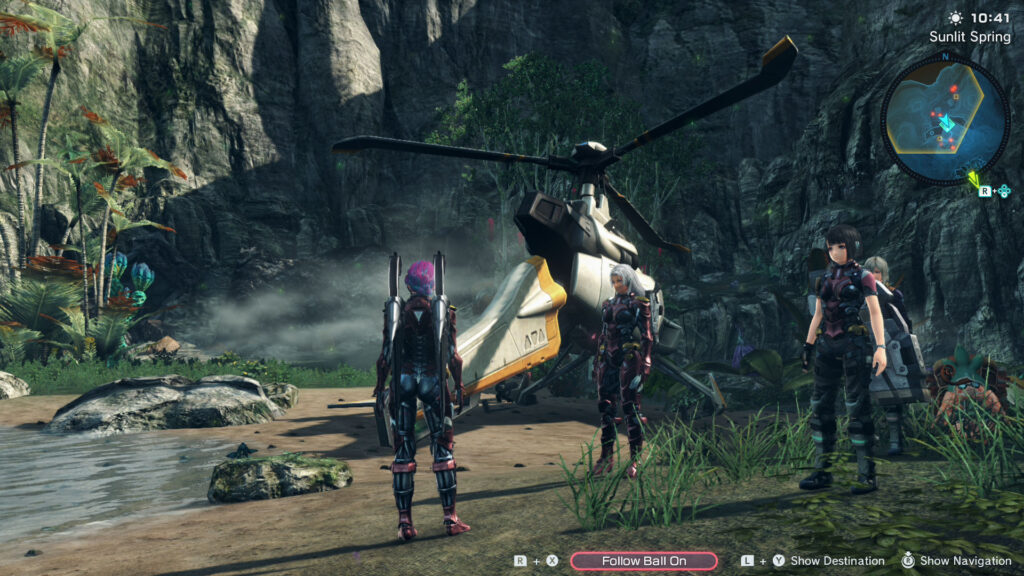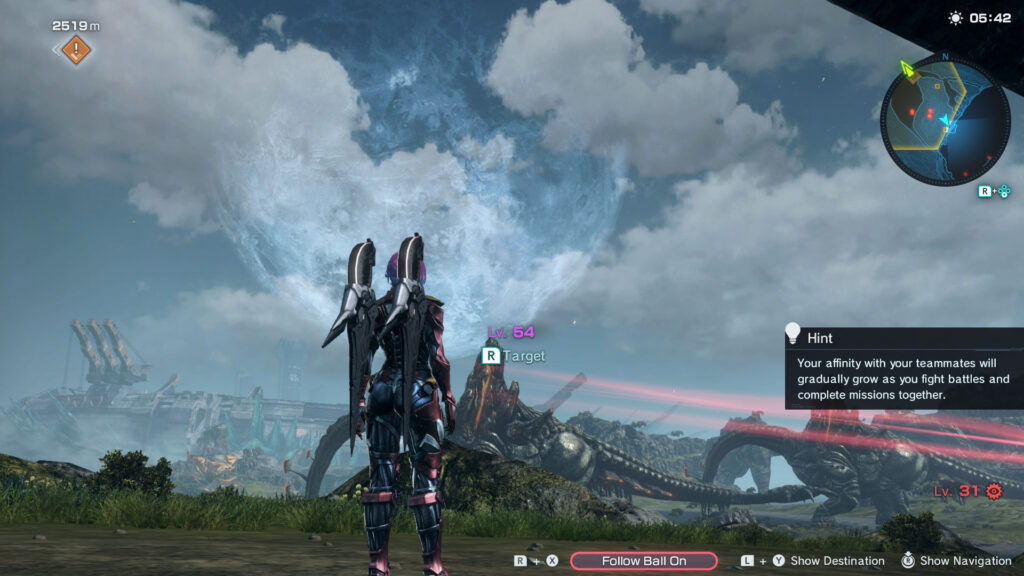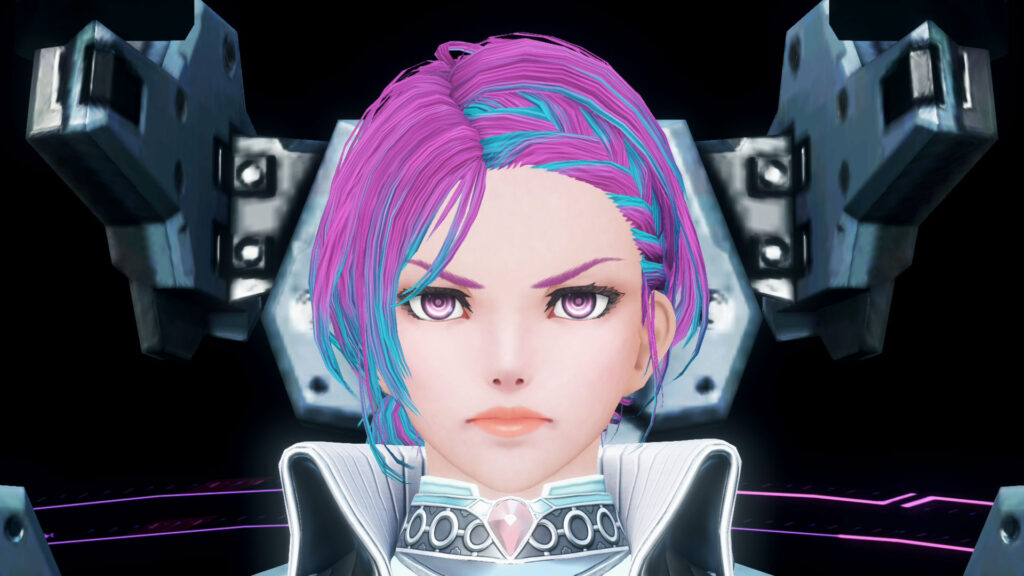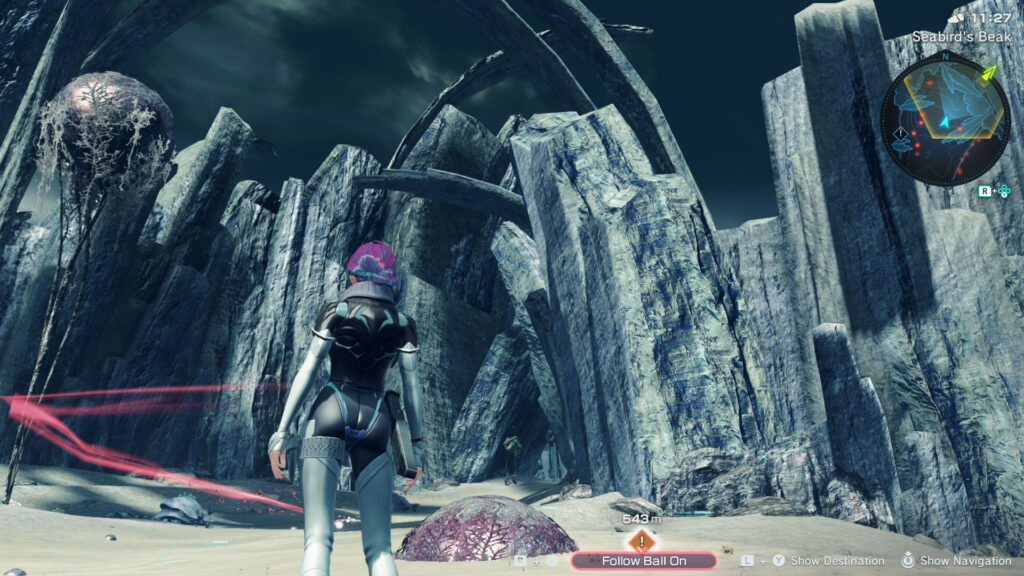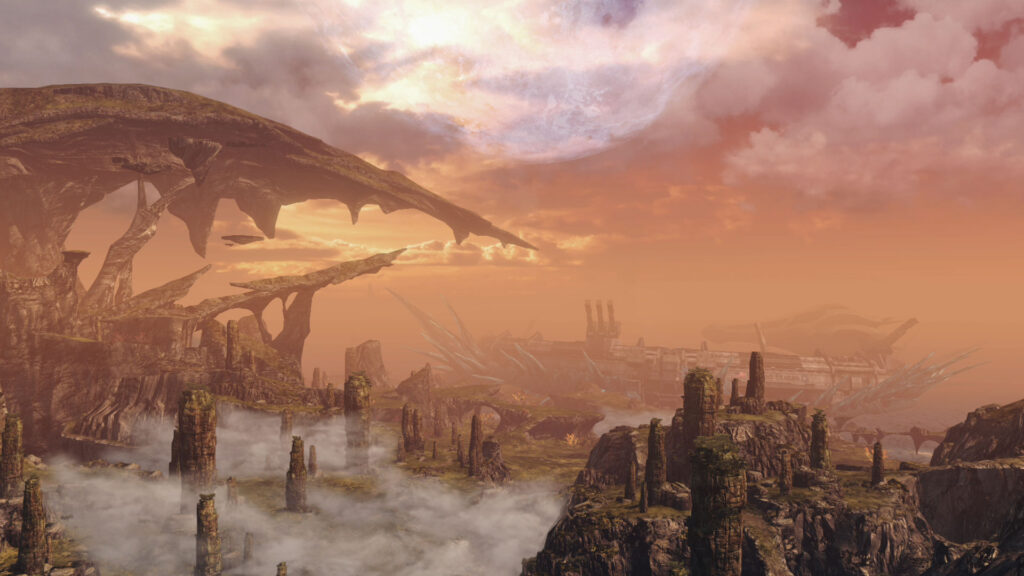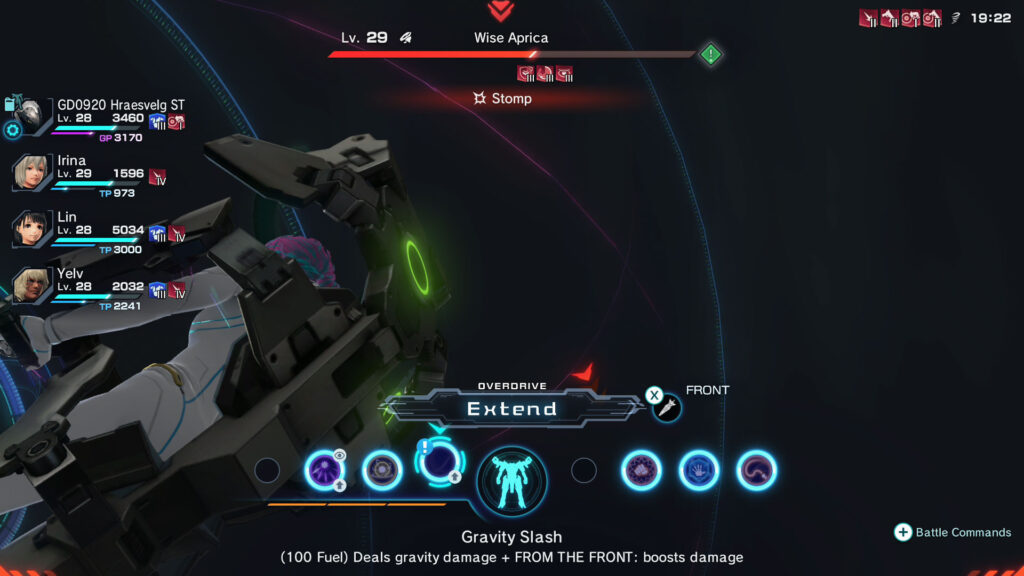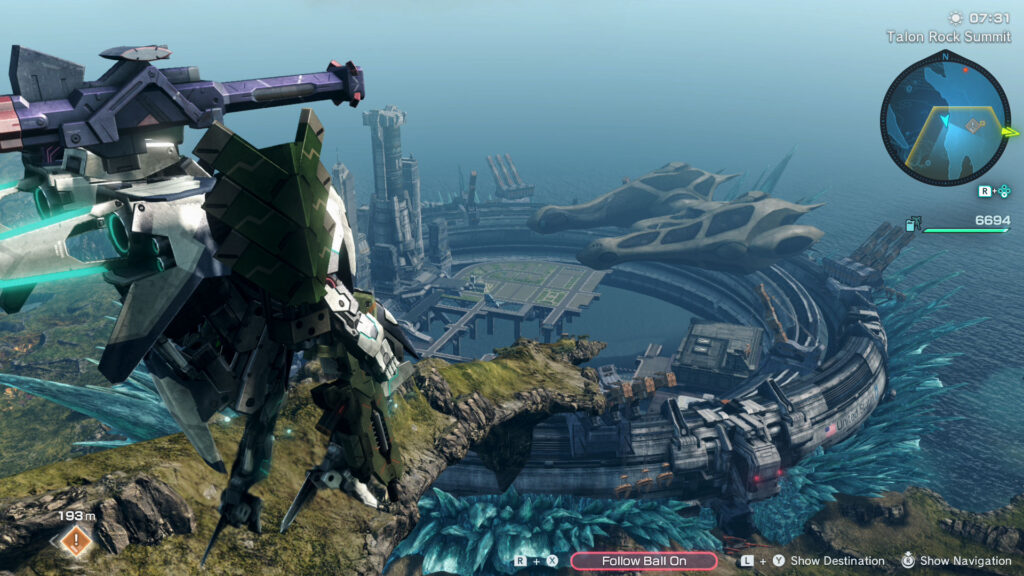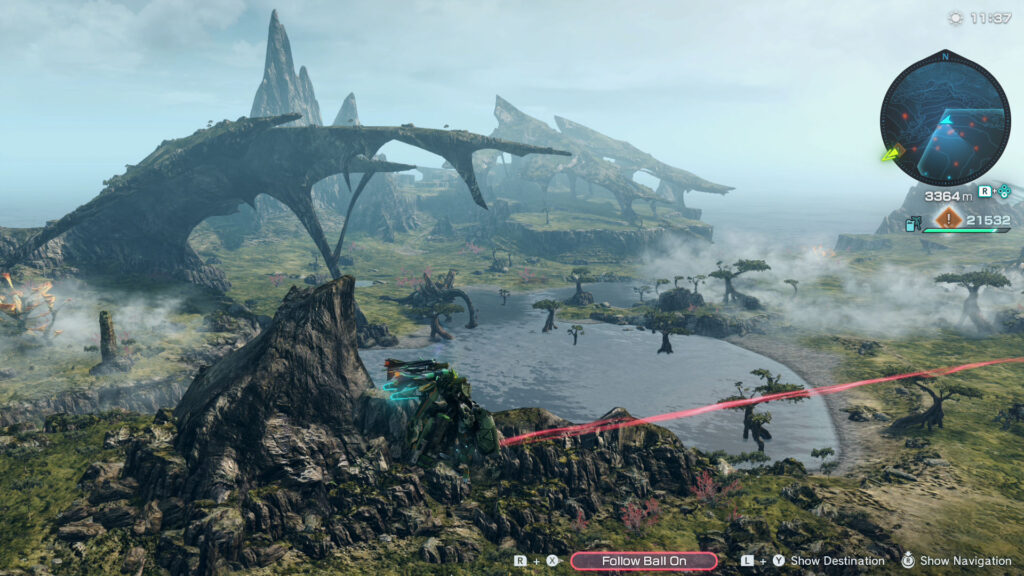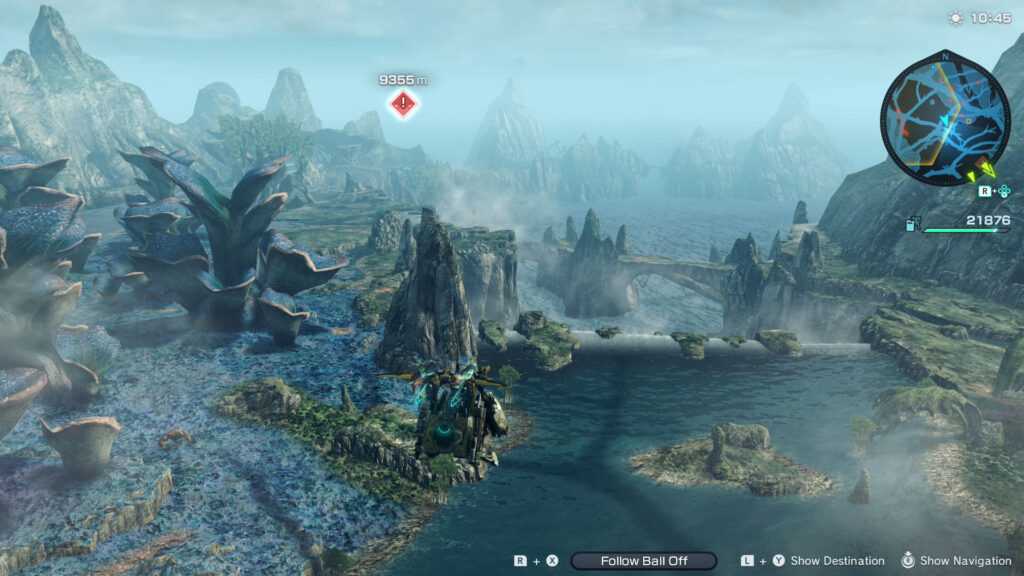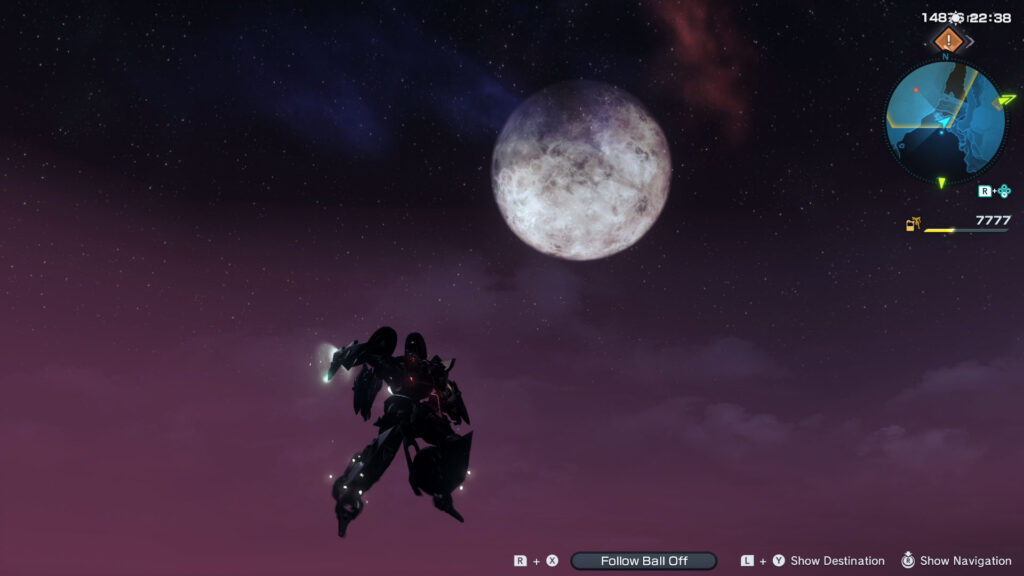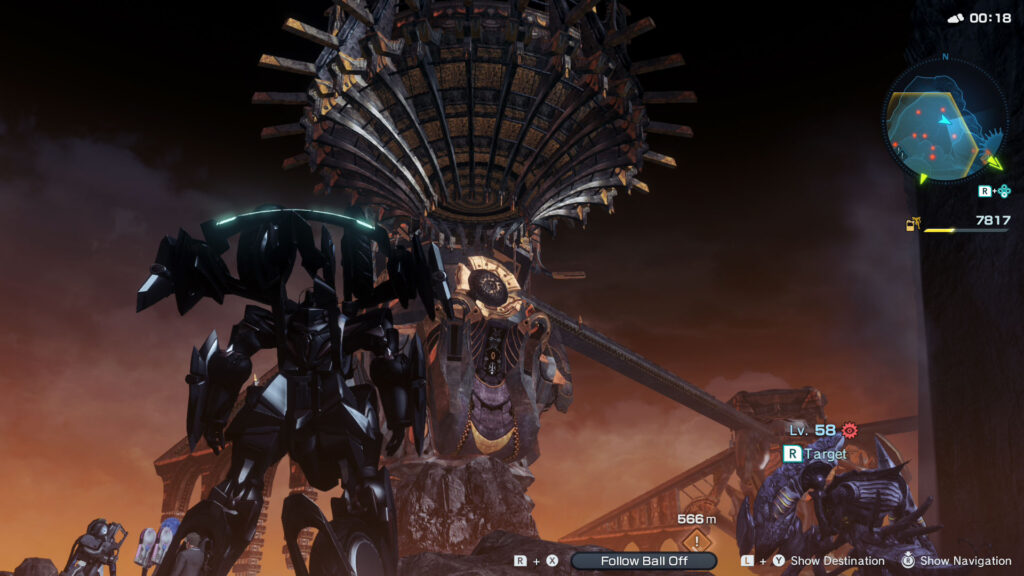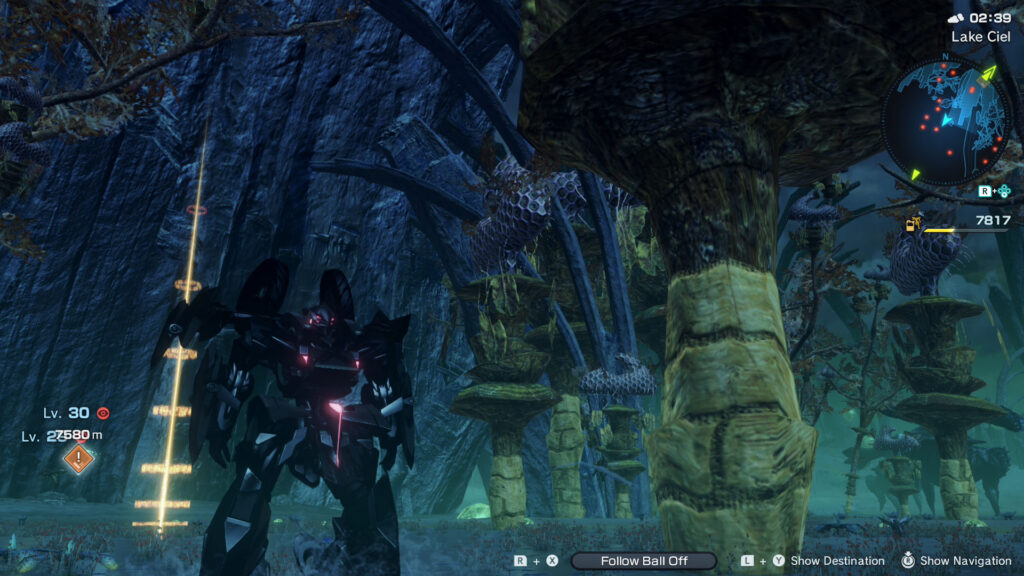Quick Verdict
Xenoblade Chronicles X: Definitive Edition gives the Wii U RPG a new lease on life, especially considering how much the Xenoblade Chronicles franchise has grown since X’s original release in 2015. The game was a technical marvel on the Wii U and is even more impressive on the Switch with its giant, sprawling open world. The Definitive Edition has enough polish to smooth out Xenoblade Chronicles X’s roughest edges, but its core design remains divisive as ever. This RPG is narratively sparse, mechanically dense, and structurally uneven—and for some, it’s the perfect game.
Sandwiched between the emotionally charged Xenoblade Chronicles and the colorful, character-driven Xenoblade Chronicles 2, Xenoblade Chronicles X was always the odd one out. The game prioritizes exploration over storytelling—and executes it better than most games even now. If I had to sum it up, Xenoblade Chronicles X is very much designed like an MMORPG from the early 2000s, just mainly as a single-player experience. If that sounds appealing to you, there’s well over 100 hours of entertainment packed in the world of Mira.
Nothing Short of a Miracle

If you follow the history of the Xenoblade Chronicles franchise, you’ll understand me when I say it’s nothing short of a miracle that Xenoblade Chronicles X: Definitive Edition even exists on the Nintendo Switch. You see, the original Xenoblade Chronicles almost never made it to the U.S. and it took a fan campaign dubbed Operation Rainfall to get the game to North America, along with The Last Story and Pandora’s Tower. The success of Xenoblade Chronicles managed to give Monolith Soft the greenlight to develop Xenoblade Chronicles X for the Wii U and it turned out to be one of the best games ever created for that console. What the team at Monolith Soft managed to pull off, despite the Wii U’s limitations, was also nothing short of a miracle at the time.
After spending over 65 hours exploring the refreshed Mira on Switch, it feels like Xenoblade Chronicles X: Definitive Edition finally realizes the scope and ambition of the original game, but it also brings along the fundamental design quirks that make this game such an odd duck. Every numbered entry in the Xenoblade Chronicles franchise focuses on character building and storytelling, but Xenoblade Chronicles X: Definitive Edition takes a different path, opting for scale, systems, and exploration. That’s not to say exploration isn’t important in the three numbered entries, but it’s not to the level of focus it is in X. If you’re considering Xenoblade Chronicles X: Definitive Edition after playing through any or all of Xenoblade Chronicles 1, Xenoblade Chronicles 2, and Xenoblade Chronicles 3, you should know this entry is distinctly unique from the moment the game starts.
For those who are returning to the world of Mira after playing the original on Wii U, know that there are noticeable quality of life improvements and additional story content to experience and enjoy. Storytelling, however, continues to take a backseat to exploration and deep combat systems. Although I found the plot to have a compelling premise, it’s never fully realized and the lack of emotional depth feels jarring, especially after Xenoblade Chronicles 3. Unfortunately, the additional content and characters don’t fill the void left behind by the original ending. I applaud the effort that went into putting a bow on it, especially getting many of the original voice actors to reprise their roles, but it ultimately falls short of satisfying from a narrative perspective.
A New Old World

Starting with the opening minutes, Xenoblade Chronicles X: Definitive Edition makes it clear it’s going to be different from the numbered entries in the Xenoblade Chronicles franchise. The game begins by allowing players to create their own character before setting off on a long adventure exploring Mira, an alien planet where humanity’s massive ark, the White Whale, crash-lands following the destruction of Earth. The remaining survivors establish a new home called New Los Angeles, with the player’s character joining BLADE, a military organization tasked with exploring Mira, recovering lost technology, and working together to keep humanity alive. It’s a sci-fi premise through and through with an overall minimalistic plot that’s delivered in broad strokes rather than through intricate storytelling. While there is a main questline, progress can often be limited by specific requirements, such as achieving a minimum level, completing certain affinity missions, and surveying a percentage of a designated region. These affinity missions are often where character interactions occur, which means some of the more interesting character arcs are actually hidden behind optional content.
In Xenoblade Chronicles X: Definitive Edition, players have a massive open world to explore, with Mira broken down into five continents. Noctilum is a lush bioluminescent jungle that’s filled with glowing flora and winding rivers, while the barren Oblivia offers arid canyons and ancient ruins. Sylvalum, which is home to one of my favorite soundtracks in the game, is a harsh tundra with crystal-like formations. Then there’s Cauldros, a volcanic wasteland filled with molten lakes and jagged rock formations. These four zones are introduced after the starting region, Primordia, which features rolling plains and gentle cliffs. It’s a deceptively peaceful introduction to the world of Mira, which only gets more dangerous as you progress. After all, it wouldn’t be a proper Xenoblade Chronicles experience if you didn’t get randomly killed by a giant monster three times your level while you’re just walking around.
It’s hard to state just how impressive the visual presentation is for Mira’s five continents on the Switch. The Definitive Edition notably improves on the original, with better textures, enhanced lighting, and clever mastery of draw distances to deliver this awe-inspiring sense of scale and immersion. You will forget you’re playing this game on a handheld console that is eight years old and getting ready to be replaced with its successor. These visual upgrades truly enhance the joy of exploring Mira’s vast landscapes, but the frustration of getting unexpectedly killed can dampen the experience. Nonetheless, the wizards at Monolith Soft continue to impress on how the team manages to pull this off time and time again. I went back to Xenoblade Chronicles 2 shortly after the credits rolled in Xenoblade Chronicles X: Definitive Edition, and the jump in graphical fidelity is staggering. I couldn’t believe both these games run on the same system. For a game that puts a huge focus on exploration, Mira truly does feel more like a living ecosystem than just an elaborate backdrop for combat encounters.
X Marks the Spot

Speaking of combat, this is where Xenoblade Chronicles X: Definitive Edition really shines. While it may feel like a step back compared to the systems found in Xenoblade Chronicles 2 and Xenoblade Chronicles 3, mainly because it utilizes the same long horizontal hotbar found in Xenoblade Chronicles 1, there are several layers of complexity to the system that are arguably not found in any of the other games. The closest to me is Xenoblade Chronicles 3’s system, but X gives you a bit more freedom with its Drifter class. But if you’re new to the franchise, the game features real-time action mixed with MMO-like mechanics, meaning actions all revolve around cooldown timers. Characters’ abilities are called Arts, while Skills are more like passive abilities that can be mixed and matched once you unlock them for each class. In total, Xenoblade Chronicles X: Definitive Edition offers 16 classes, but only 15 of them offer Skills to unlock. The starting class, Drifter, doesn’t have its own Skills, but its benefit is the ability to equip five Skills versus four with the other classes. In other words, once you finish maxing out all the classes, it benefits you to be a Drifter since you can assign one additional Skill to your character. This is just one layer of depth the system has to offer.
Like many MMORPGs, combat has a heavy focus on character positioning, balancing cooldown timers, and aggro management. Initially, it can feel overwhelming, even for veterans of the series since there’s a lot of complexity to it. It never gets boring either, as players have to pay attention to the Soul Voice trigger system, which is a timed interaction that involves pushing the B button at the right moment. This triggers a variety of support effects, including healing, buffs, and morale boosts. The biggest change in the Definitive Edition, however, is the addition of Quick Cooldown, which allows the skipping of a move’s cooldown so it can be used again before it’s ready. Usage is limited to a certain amount of times per combat encounter, but the bar does slowly regenerate during combat. It’s worth noting that Quick Cooldown is only available for Ground Combat and not Skell Combat, at least until you finish the entire game. I found this addition to be a welcome change to Xenoblade Chronicles X, and actually made me wonder how I possibly played through the Wii U version without it.
Another major aspect of combat in Xenoblade Chronicles X: Definitive Edition is that each character can equip two weapons, one ranged and one melee. That means players can instantly switch between ranged and melee during combat, and Arts are also split between melee and ranged. The Arts a player has access to depend on the weapon that’s equipped, allowing for a lot of experimentation to suit different playstyles. For example, I got tired of having to worry about positional attacks, so I opted for a weapon and Arts loadout that didn’t rely on that. The combinations can be overwhelming, but fortunately you don’t really have to master the system in order to finish the main story. All this complexity is there for post-game content, for those looking to set records on the leaderboard after farming perfect gear for their loadout. The online component returns in the Definitive Edition, but it’s almost not worth mentioning. There are several online co-op missions that offer rewards called tickets, which can be exchanged for specific items in lieu of farming, but you’ll save yourself time simply doing it solo. There are also two Nemesis fights—Yggralith Zero and Telethia Plume—where the goal is to cumulatively earn 100 RPs within 10 attempts. RPs are generated by whittling down the bosses’ health bars, and you have eight minutes per attempt to deal as much damage as possible. These fights can be tackled solo or with other party members online. While they’re initially interesting, the appeal doesn’t last very long, at least for me.
Skellraiser

This won’t matter much to those who never played Xenoblade Chronicles X on Wii U, but the Definitive Edition’s refinements to the UI really mitigate some of the original game’s frustrations. For starters, there is now a menu option to switch out party members at any time, assuming they aren’t locked out for a particular mission. Players can also change the time from the main menu, instead of having to visit a Rest Spot. Other quality of life changes include auto save, multiple save slots, and the ability to respec Battle Points, which are used to upgrade Arts and Skills. For me, the change I loved the most is that everyone now gets experience points, even when they’re not in your active party. The original required a character to be in the party in order to gain experience, which meant a lot of swapping in and out, which just isn’t fun in 2025. For other returning players, the addition of Follow Ball might be the best, which essentially guides the player to the mission’s objective, similar to what was introduced in Xenoblade Chronicles 3. But beware, Follow Ball has a tendency to take you straight to your death if you’re not paying attention, and sometimes, it expects you to have the ability to seamlessly walk through cliffs.
In addition to those changes, Xenoblade Chronicles X: Definitive Edition’s story continues after the original game’s ending. At the time, Xenoblade Chronicles X’s cliffhanger conclusion was controversial to say the least. The game never got an expansion either, unlike the numbered titles which have all received sizable story DLCs. Xenoblade Chronicles got Future Connected with the Switch version, while Xenoblade Chronicles 2 had the much-beloved Torna – The Golden Country. Xenoblade Chronicles 3’s DLC was titled Future Redeemed, which we previously reviewed here. Unlike those mostly standalone DLCs—with some featuring entirely new casts—Xenoblade Chronicles X: Definitive Edition’s new content picks up immediately after the original ending. New characters are introduced, but the main point of the additions is to help tie up loose ends. While we’re on the topic of new characters, Xenoblade Chronicles X: Definitive Edition also has new party members to recruit, bringing the total number of playable characters to 22. We won’t spoil who these are, but one quickly became a fan favorite.
All of these enhancements contribute to a better overall experience, but they don’t fully address the issues of poor storytelling since players can ultimately choose to skip over much of the character and world-building found in the optional affinity missions. It’s a sacrifice the game knowingly makes with its massively open-world design, but I felt this could have been addressed with the new epilogue, given what Monolith Soft has learned since the original release of Xenoblade Chronicles X. I consider Xenoblade Chronicles 3 one of the best games I’ve ever played and absolutely loved its characters and story; I had some expectations that a small part of that would make its way to Xenoblade Chronicles X: Definitive Edition when I heard there would be additional story content, but I was left a bit disappointed.
Mira Culpa

To be clear, Xenoblade Chronicles X: Definitive Edition will be familiar to anyone who has played one of the three mainline Xenoblade Chronicles entries. However, X puts a much bigger focus on world exploration, with numerous sites and landmarks to unlock. There’s even a mini game that involves the placement of probes to generate resources while you’re playing the game. Side content is so abundant that it borders on overwhelming—the map never seems to end with quest markers. Some are mere busywork, while others offer mini stories to flesh out NPCs and lore. Of course, my criticisms may not matter to you if you favor exploration and systems depth over character and story-driven development. I personally enjoy Xenoblade Chronicles 1, 2, and 3 for their characters and stories, and X definitely lacks in those departments.
That said, there are very few games that offer such expansive, ambitious worlds to explore. It’s truly a shame that you have to invest at least 30 hours before everything opens up with flying Skells, because that’s when the game really shines. It’s a beautiful, wondrous world to fly through, from one corner to another, and Mira is truly a place worth getting lost in. And that’s without even mentioning the soundtrack from Hiroyuki Sawano, which is also a noticeable departure from what you’d expect in a Xenoblade Chronicles game. While the haunting sweeping melodies still exist, Xenoblade Chronicles X’s soundtrack is bombastic and full of vocals, with high-energy beats and a bit of pop. Personally, it’s one of my favorites, but like the rest of the game, it’s not for everyone.
Ultimately, Xenoblade Chronicles X: Definitive Edition feels like a preserved experiment. It’s still the franchise’s boldest entry in terms of ambition, scope, and design complexity, even if it’s alienating to some of its fanbase. The game is more interested in the idea of being massive than in being meaningful and where the other Xenoblade Chronicles games thrive on emotional arcs and climactic storytelling, X offers scale, systems, and solitude. Some players will find that liberating, but others, like me, will find it a bit empty. Regardless, there’s nothing else quite like it.
Xenoblade Chronicles X: Definitive Edition releases on March 20, 2025 for Switch. This review is based on a purchased retail copy of the game on Switch. While FullCleared does have affiliate partnerships, they do not influence our editorial content. We may, however, earn commissions for products purchased via affiliate links.




